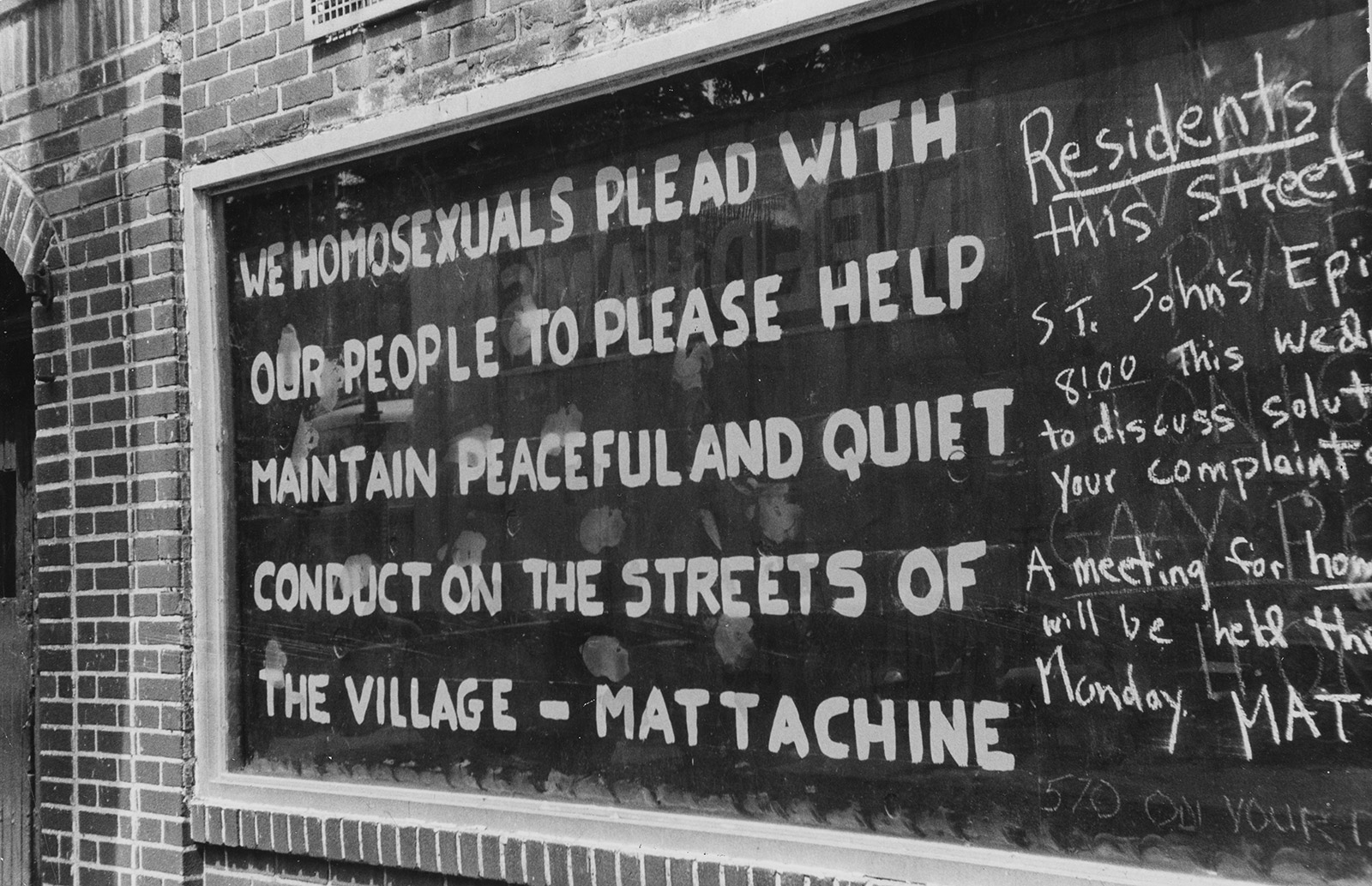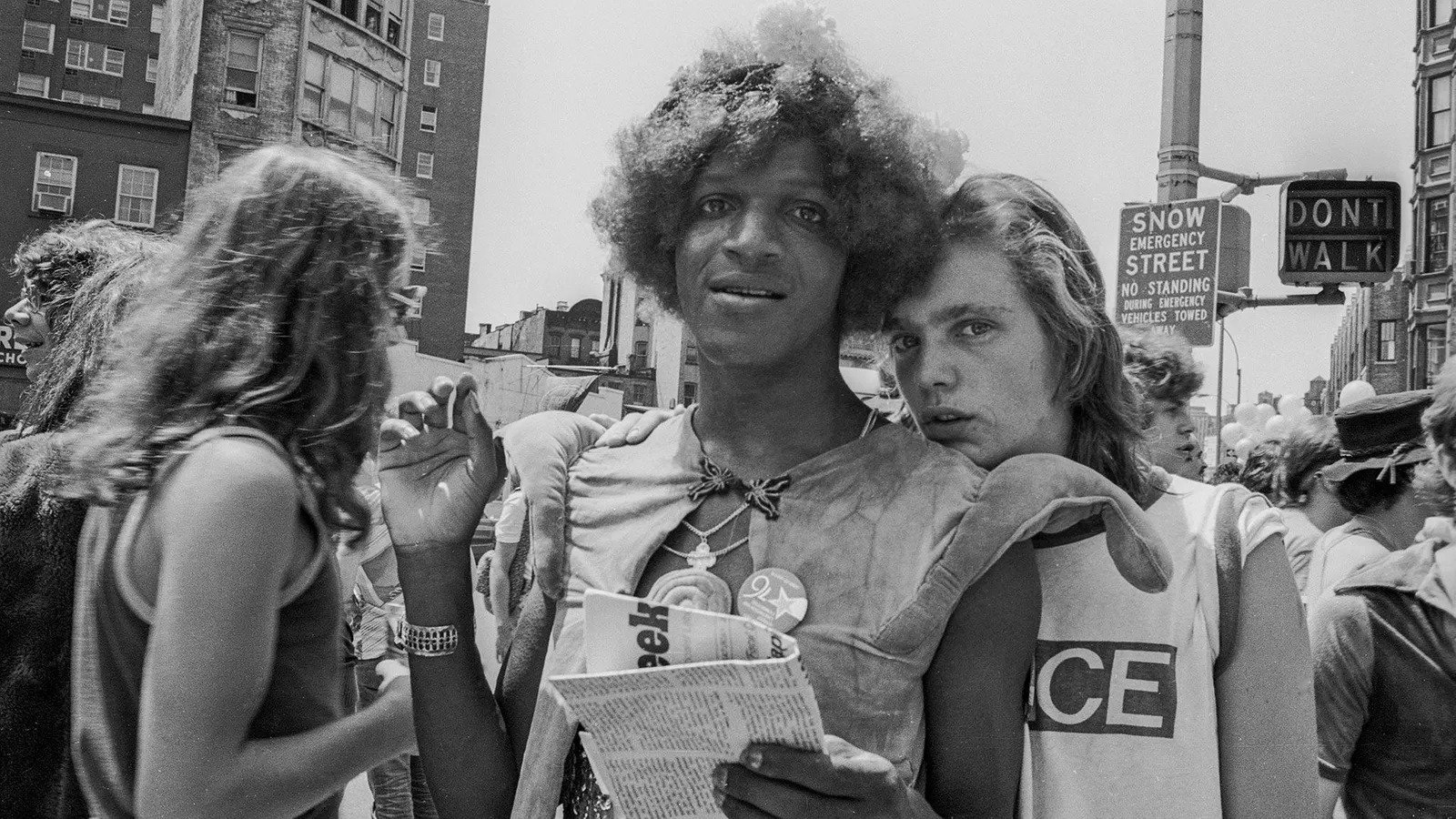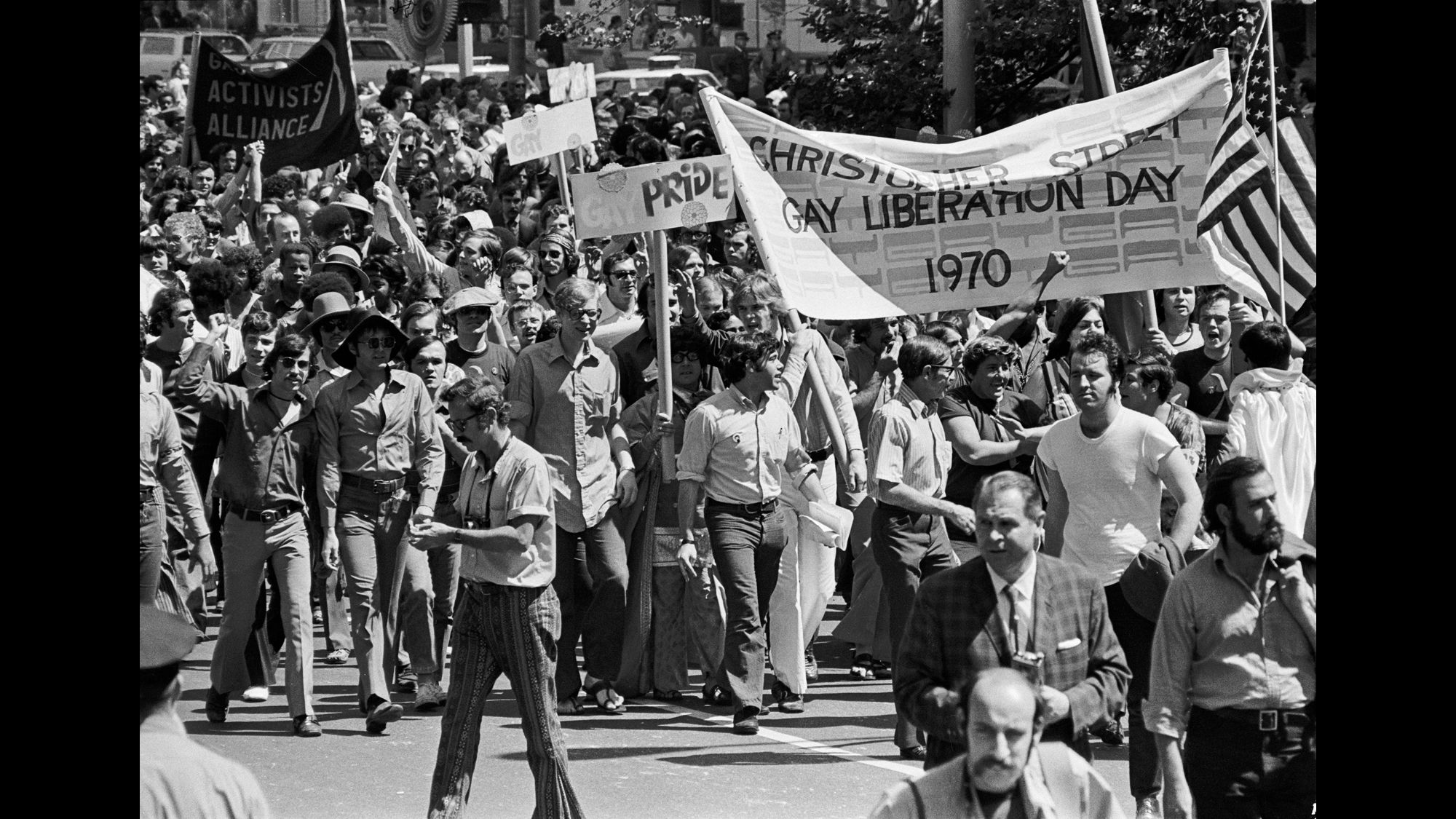The Stonewall Era: 1969-1970s

Window of the Stonewall Inn after the riots in 1969.
On June 28, 1969, patrons of a gay bar called the Stonewall Inn in New York City resisted a police raid and sparked days of protests and riots that galvanized the LGBT community and its allies. The uprising is widely considered a turning point in the history of the LGBT movement, as it inspired more visibility, activism, and resistance among LGBT people.

Activist Marsh P. Johnson and her friend at Christopher Street Liberation Day in NYC, 1976.
 In 1970, the first gay pride parades were held in New York, Los Angeles, San Francisco, and Chicago, to commemorate the anniversary of the Stonewall uprising. The parades became an annual tradition to celebrate LGBT identity and culture.
In 1973, the American Psychiatric Association removed homosexuality from its list of mental disorders, after years of pressure and activism from gay rights advocates. This was a significant step in destigmatizing homosexuality and promoting its acceptance in society.
In 1974, Kathy Kozachenko became the first openly gay person to be elected to public office in the U.S., when she won a seat on the Ann Arbor City Council in Michigan. She was followed by Harvey Milk, who became the first openly gay man to be elected to public office in California, when he won a seat on the San Francisco Board of Supervisors in 1977.
In 1978, Gilbert Baker designed the rainbow flag as a symbol of gay pride and diversity. The flag was first flown at the San Francisco Gay Freedom Day Parade in 1978, and became widely adopted by the LGBT movement as a sign of solidarity and visibility.
In 1970, the first gay pride parades were held in New York, Los Angeles, San Francisco, and Chicago, to commemorate the anniversary of the Stonewall uprising. The parades became an annual tradition to celebrate LGBT identity and culture.
In 1973, the American Psychiatric Association removed homosexuality from its list of mental disorders, after years of pressure and activism from gay rights advocates. This was a significant step in destigmatizing homosexuality and promoting its acceptance in society.
In 1974, Kathy Kozachenko became the first openly gay person to be elected to public office in the U.S., when she won a seat on the Ann Arbor City Council in Michigan. She was followed by Harvey Milk, who became the first openly gay man to be elected to public office in California, when he won a seat on the San Francisco Board of Supervisors in 1977.
In 1978, Gilbert Baker designed the rainbow flag as a symbol of gay pride and diversity. The flag was first flown at the San Francisco Gay Freedom Day Parade in 1978, and became widely adopted by the LGBT movement as a sign of solidarity and visibility.